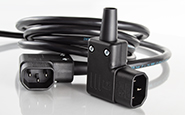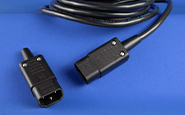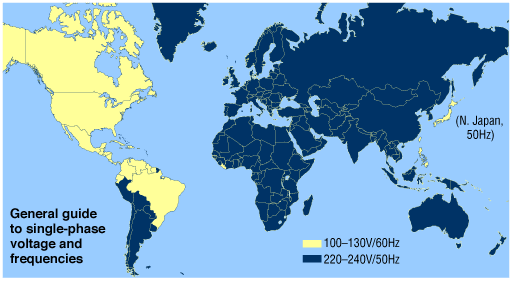The Global Marketplace
For country-specific information, see our Guide to Worldwide plugs and sockets Patterns.
Markets for electrical and electronic equipment are truly global and, because of this, more competitive than ever before. It is no longer sufficient to consider just those competitors in Los Angeles, Chicago, and Toronto. One must also be ready for competitors from Taipei, Osaka, Münich, and London.
Overseas manufacturers know that in order to prosper - and in some cases to survive - they must participate in U.S. and Canadian markets for their products. Conversely, many U.S. and Canadian companies are responding to the new, highly competitive markets by exporting vigorously, taking the battle for markets directly to foreign competitors’ doorsteps.
Because of the growth of a global market for electrical and electronic equipment, more U.S. and Canadian manufacturers of these products are exporting now and in greater volumes than ever before. Even startup organizations, who have yet to make their first shipment, have market plans that include exports.
And where do they export? Most exports of electronic equipment go from North America to Europe, Australia, and industrialized countries in East Asia. Some electronic equipment is also exported to developing markets in Latin America, the Middle East, and Asia. On the other hand, electrical equipment, is generally sold throughout the world in industrialized and developing markets.
The big growth markets for North American exports in the 2000’s appear to be the 25 EU* (European Union) countries, the non-EU countries in Europe, and certain Far Eastern countries. Growth in exports to Europe will probably be most important to electronic equipment manufacturers. The fall in inter-European trade barriers has helped European economies become significantly more efficient and this will continue to translate into increases in the rate of economic growth, a growth in standards of living, and increases in consumer demand, particularly for imported products.
Export opportunities to the Far East could grow in response to the rapid economic development of these economies.
In the past, many North American exporters were able to ship a high technology product manufactured for U.S. or Canadian markets to a customer who was frequently willing to buy it “as is” at almost any price. The customer was then faced with the necessity of trying to understand instructions written in a foreign language, installing the appropriate power cord (or plug), making internal adjustments to accommodate the local power supply characteristics, and then replacing or at least adjusting the circuit protection system to the resulting current levels.
In order to be successful now, it is essential to offer products that are easily adapted to the needs of local markets, without requiring reconstruction by the user. This is especially important with regard to power cords, circuit protection and electromagnetic compatibility requirements. In fact, this is exactly what any successful domestic marketer would do to assure the success of its products at home. Clearly, the same rules apply now in export markets.
In effect, the world has become a more cohesive market, in a global economy. When we talk about “international” today, we mean a world that includes our own domestic market, not just the countries to which we export.
Preparing and submitting products for testing by international product safety agencies is complex and time consuming. It is, however, an essential part of any successful business venture. Proper organization and preparation can make international product safety compliance attainable within realistic cost and time parameters.
Smaller companies may choose to utilize the services of a consultant who is experienced in handling agency submittals. If you expect to develop several products over time, the consultant could be retained to help develop the capability internally to handle agency submittals. Realistically, unless you are prepared to dedicate substantial resources to the international compliance effort, the learning process should be expected to take three to four submittals. After that, a dial-up arrangement with a consultant for quick questions would probably prove useful.
Although Interpower does not provide in-depth consulting services, we will try to answer telephone questions about components. We offer this service free of charge.
* EU countries include France, Germany, United Kingdom., Ireland, Belgium, Netherlands, Luxembourg, Denmark, Italy, Spain, Portugal, Sweden, Austria, Finland, Greece, Czech Republic, Estonia, Cyprus, Latvia, Lithuania, Hungry, Malta, Poland, Slovenia, and Slovakia.







